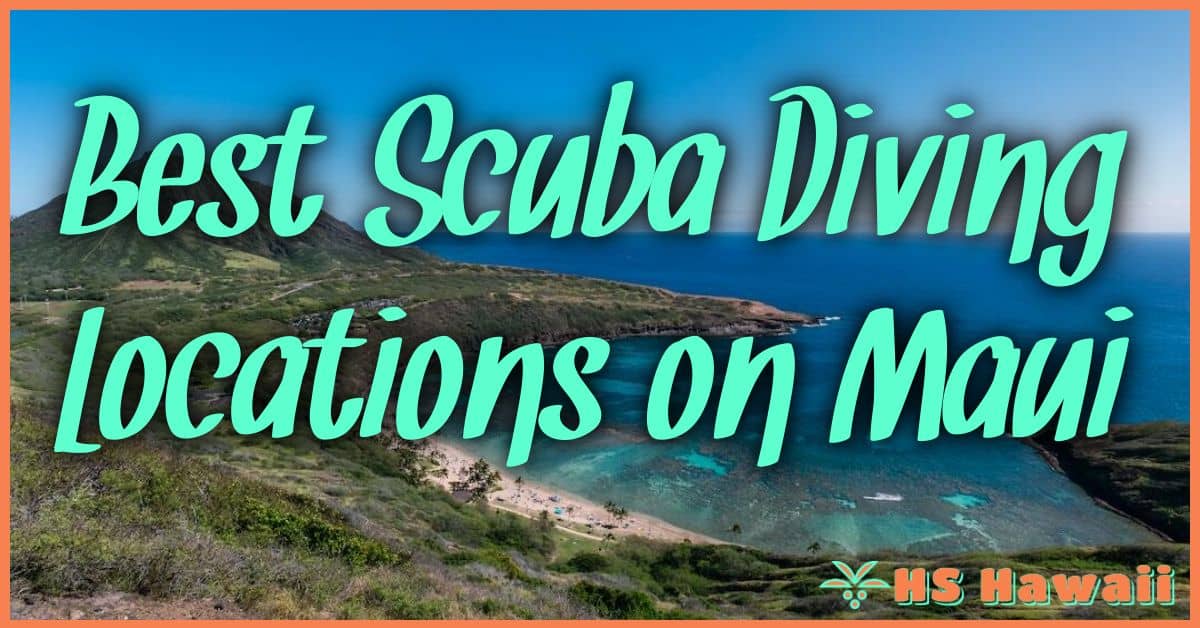When I visit Ala Moana Center, I notice much more than just shopping and dining.

Ala Moana Center stands out because it blends modern life with rich Hawaiian culture and tradition.
From the Hawaiian name, which means “Path to the Ocean,” to the center’s art collection and architecture, everything reminds me of the deep roots and beauty of Hawaii’s people and land.
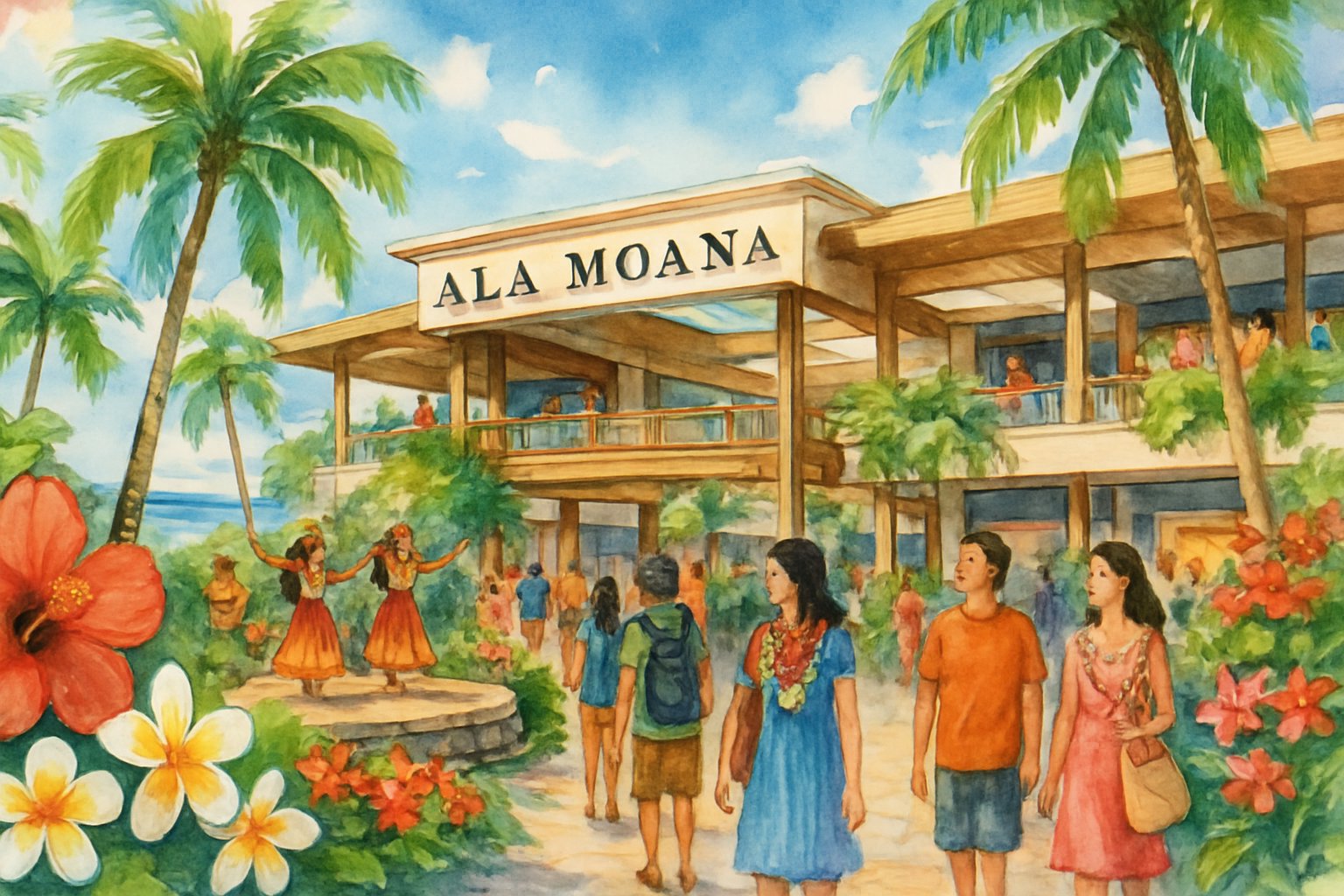
As I walk through the center, I see art and natural designs that celebrate Hawaii’s culture and history.
Markings and signs honor the native language, and I learn new things about the island with each visit.
These details make Ala Moana Center a place where I feel both welcome and connected to Hawaii’s story.
The more I explore, the more I realize that Ala Moana Center is not just a mall.
People come here to shop, relax, and experience moments that reflect Hawaii’s spirit and heritage.
Ala Moana Center’s Place in Honolulu
Ala Moana Center plays a major role in Honolulu.
It links key neighborhoods, acts as a shopping and cultural hub, and connects deeply to local life in Hawaii.
Relationship to Downtown Honolulu
When I think about how Ala Moana Center fits into Honolulu, its location stands out right away.
The center sits close to downtown Honolulu, making it easy for both visitors and residents to reach for shopping, dining, and entertainment.
Downtown Honolulu is known for its offices, government buildings, and historical landmarks.
Ala Moana Center gives people who work or do business downtown a convenient spot to grab lunch, shop, or relax after work.
The open-air setting, shaped by the soft Hawaiian breeze, creates a unique experience compared to indoor malls.
People commuting between downtown and other parts of the city often stop at the center.
Bus routes connect Ala Moana Center with the rest of Honolulu.
This connection supports local businesses and brings a mix of shoppers and tourists to the mall every day.
The area looks lively, especially during events, sales, and holidays.
You can learn more about the location and its role in Honolulu at the Ala Moana Center’s website.
Connection with Waikiki
Ala Moana Center sits just west of Waikiki, one of Hawaii’s most famous beaches and tourist spots.
I often see both locals and visitors making a quick trip from the beach to the mall for shopping, food, or entertainment.
Its close distance to Waikiki lets the center blend the energy of tourism with everyday island life.
Many bus and trolley lines run directly between Waikiki and Ala Moana Center, making it a convenient stop for visitors.
The mall offers a taste of local Hawaiian culture through shops, art, and live performances.
This helps showcase Hawaiian traditions and products to people from around the world.
Easy access makes Ala Moana Center an extension of Waikiki’s attractions.
People looking for something beyond the beach often choose the mall for its wide selection of stores and restaurants.
The center’s setting as the world’s largest open-air mall adds to its appeal for anyone visiting Honolulu.
Historical Development of Ala Moana Center
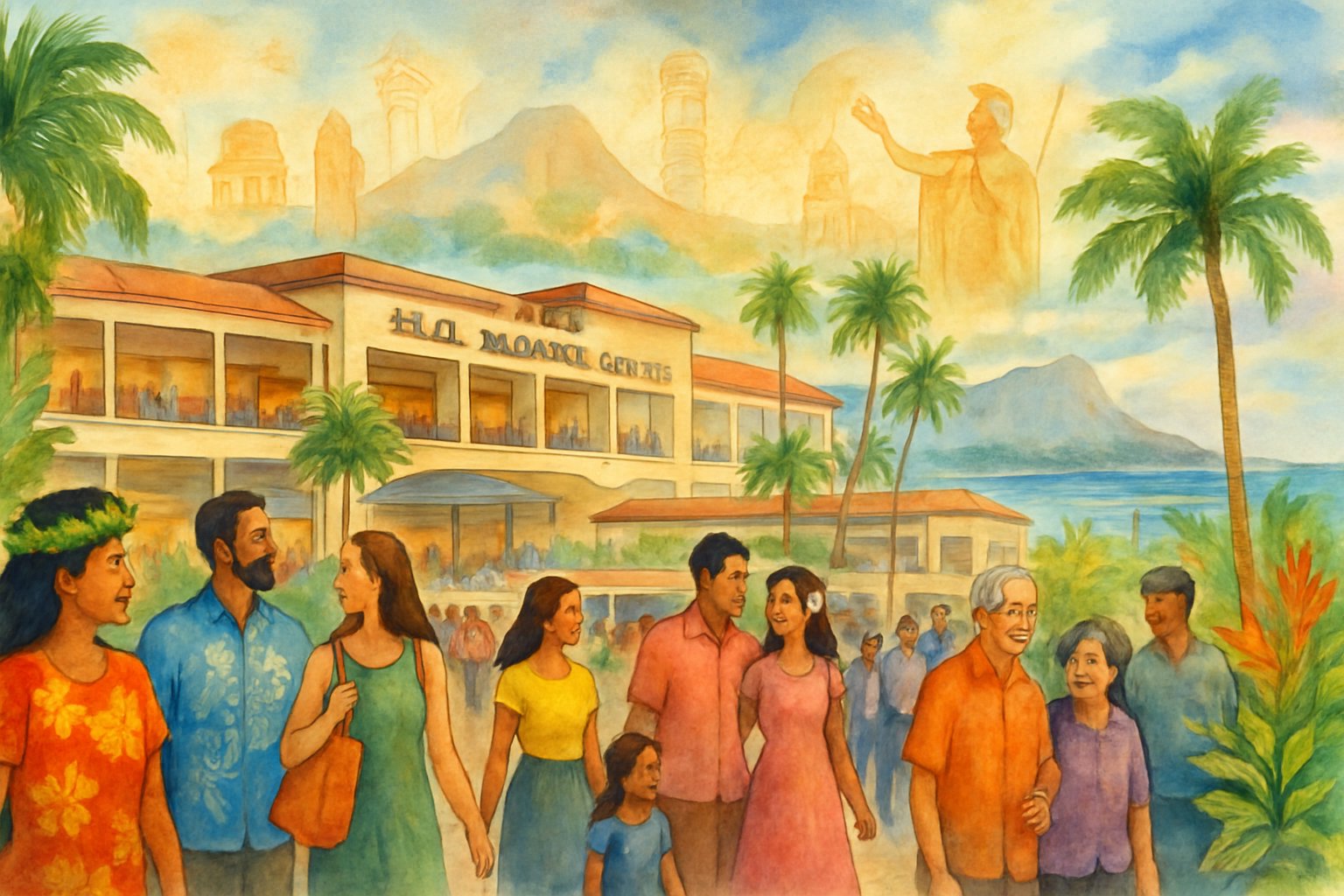
Ala Moana Center started as a large development project in Honolulu.
It grew into a major shopping destination.
Its design, location, and expansions have made it stand out, attracting both locals and visitors.
Origins and Growth Over the Years
I learned that Ala Moana Center opened in 1959 in Honolulu, Hawaii.
When it opened, it was the largest shopping center in the United States, which was a huge achievement for Hawaii at the time.
The developers chose a spot between downtown Honolulu and Waikiki, placing it in the middle of local neighborhoods and tourist areas.
The center started with a unique open-air design, letting me shop while enjoying the island breeze and sunshine.
Its opening brought many new stores to the islands, including big department stores, specialty shops, and places to eat.
In a few years, Ala Moana became a popular gathering spot for the community.
By 1966, the center doubled in size during a second phase of expansion.
This growth made it a landmark in Honolulu and turned it into a top shopping area in the Pacific region.
Today, people recognize Ala Moana as a key part of Honolulu’s retail history.
Transformation from Past to Present
At first, Ala Moana was mainly a place to shop.
Over time, it became much more.
Now, I see it as a spot where locals and tourists come together for shopping, dining, and special events.
The center still uses an open-air design, but now features luxury brands, local shops, and even cultural performances.
Ala Moana Center expanded in size and adapted to changing trends.
It keeps updating stores and adds new spaces for entertainment.
Developers work to keep the look and feel modern while reflecting Hawaiian culture in garden areas and statues.
Ala Moana hosts events and festivals that celebrate local traditions.
It has become a place where people enjoy both shopping and learning about the culture of Honolulu and Hawaii.
This mix of old and new makes Ala Moana Center special.
Cultural Importance to Hawaiʻi’s Communities
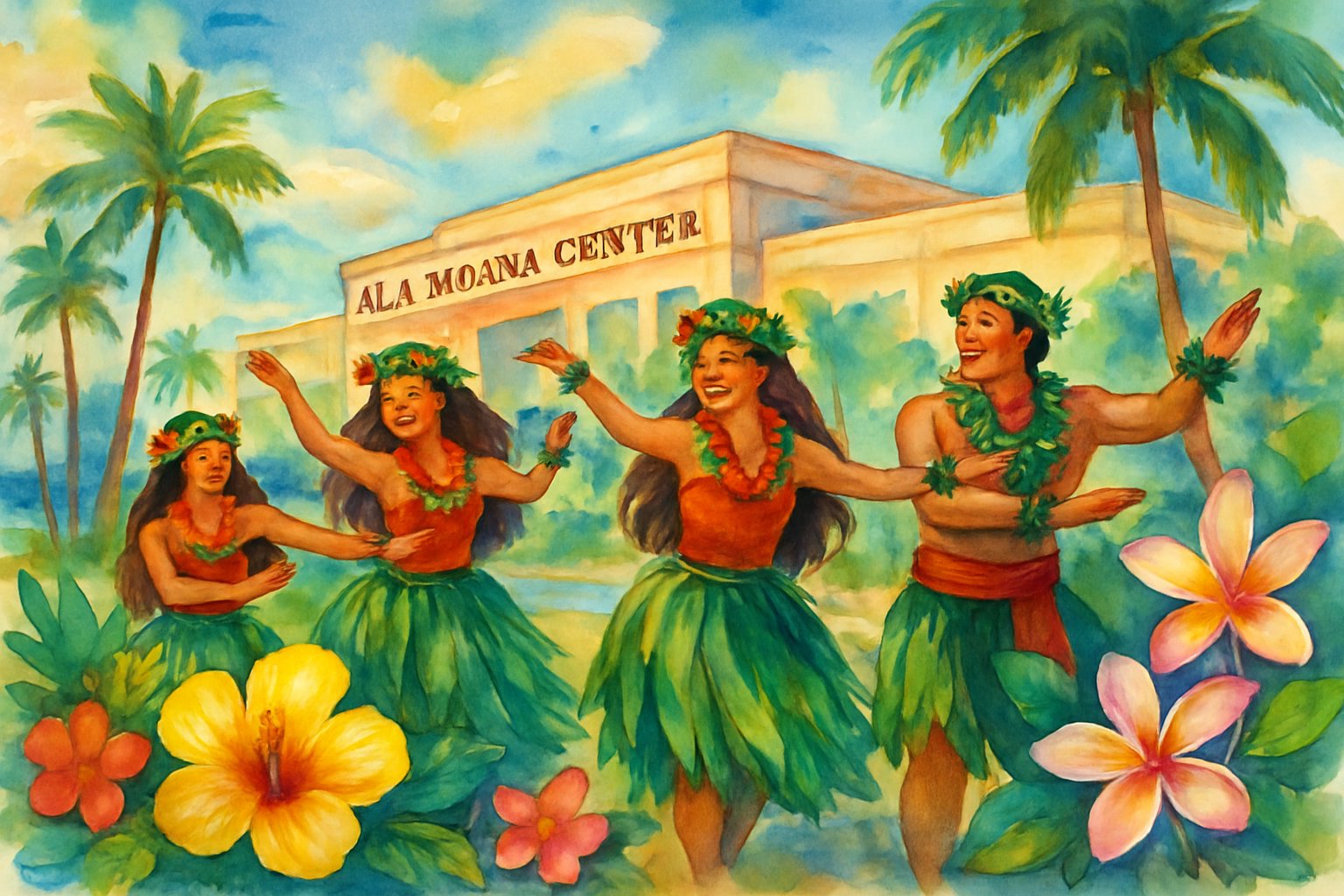
I see Ala Moana Center as a place where people from all over Hawai‘i meet, celebrate, and share experiences.
It isn’t just for shopping—the center brings together art, food, music, tradition, and community spirit in one bustling space.
Role in Hawaiian Social Life
When I walk through Ala Moana Center, I notice how it acts as a hub for families, friends, and coworkers.
People gather for birthday lunches, graduations, and everyday meet-ups.
The open-air design invites everyone to relax, stroll, and enjoy the fresh Hawaiian breeze.
It feels like more than just a mall.
It’s a central spot for social connection in Honolulu and for visitors from all over the islands.
The Center’s lawns, koi ponds, and shaded benches let me see people linger and take in the atmosphere.
Locals often treat it as a reliable place to meet up before events or after school.
It’s also common to run into people I know, making it feel like a small town in a big city.
This sense of community is unique and important to life in Hawaiʻi.
Influence on Local Traditions
Ala Moana Center hosts many cultural programs that help keep Hawaiian history and customs alive.
Hula performances, ukulele concerts, and lei-making workshops happen often.
These events let children and adults learn, participate, and feel close to their roots.
The center pays special attention to Hawaiian holidays and traditions.
For example, there are celebrations of Lei Day and bon dances during Obon season.
Stores and restaurants highlight local foods and crafts, blending commerce with culture.
Art and architecture at Ala Moana reflect local traditions.
Murals, sculptures, and design elements celebrate the islands’ environment and history.
Modern Hawaiian architectural principles appear in the way buildings use open spaces, natural light, and native plants throughout the mall.
Support for Community Events
Ala Moana Center often teams up with local groups to support community events.
Festivals, charity runs, and school performances happen here throughout the year.
These events give local artists and organizations a big stage and bring people together from many backgrounds.
The Center makes room for traditional and new celebrations.
I see everything from keiki hula (children’s hula) shows to seasonal festivals that highlight the diverse blend of cultures in Hawaiʻi.
Booths for non-profits, cultural groups, and public health campaigns are common during these occasions.
Many of these gatherings are free and open to anyone, making the Center a welcoming space for community-building.
Ala Moana Center has a long tradition of offering its space and support to events that strengthen local identity and pride.
Ala Moana Center as a Retail Destination
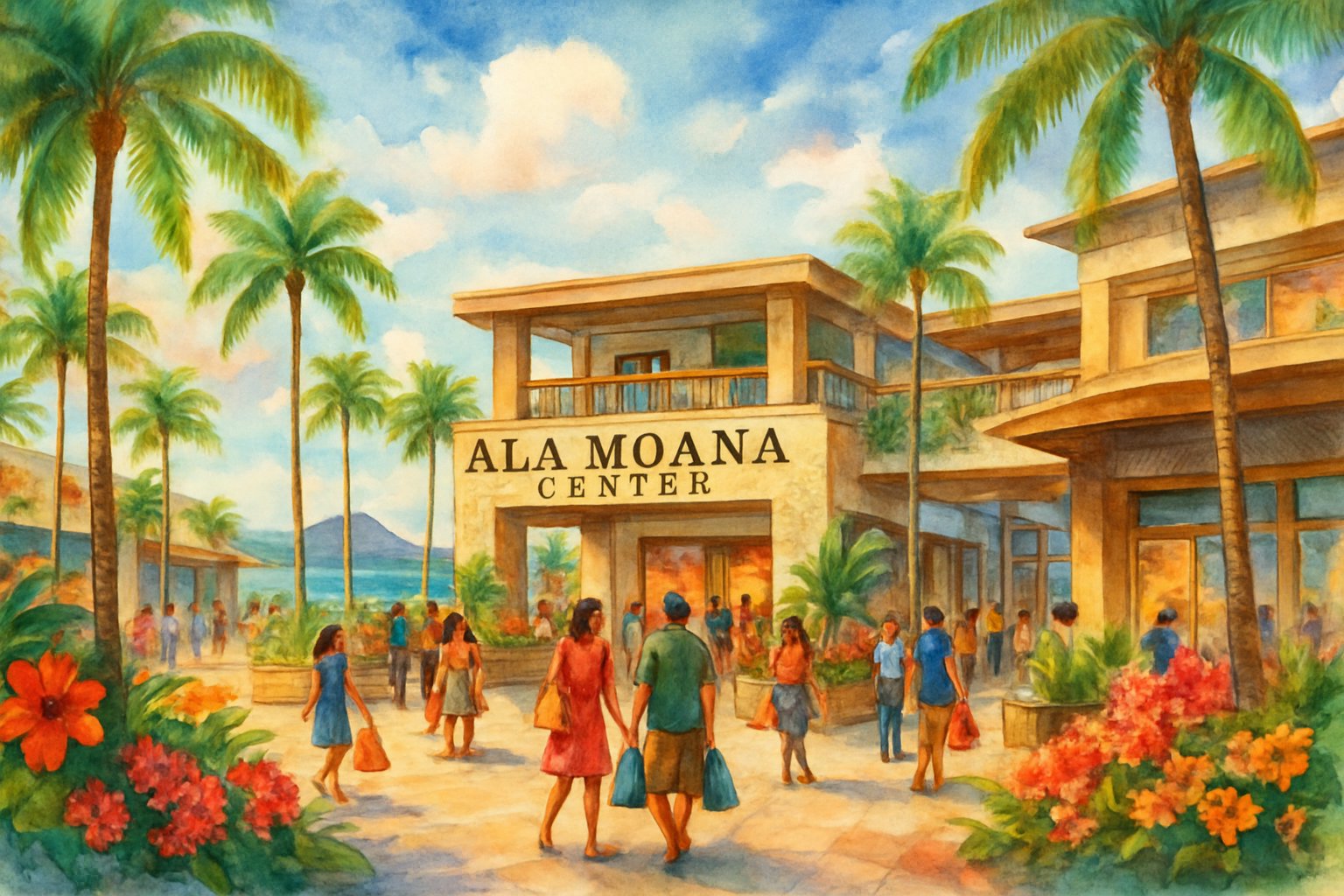
When I visit Ala Moana Center, I find a blend of big-name department stores and unique shop experiences.
This mix of retailers and local favorites gives me plenty of choices for shopping, dining, and entertainment.
Flagship Stores and Major Retailers
Ala Moana Center is the world’s largest open-air shopping mall, with over 350 shops and restaurants.
I can find popular department stores like Target, Nordstrom, Neiman Marcus, and Bloomingdale’s all in one place.
These flagship stores offer a wide variety of clothing, cosmetics, and home goods.
Target is great for everyday essentials and affordable fashion.
Neiman Marcus and Bloomingdale’s carry high-end brands, including designer apparel and accessories.
Nordstrom provides a mix of upscale products and excellent customer service.
Below is a quick list of major retailers I often see at Ala Moana Center:
- Target
- Nordstrom
- Neiman Marcus
- Bloomingdale’s
This variety of major stores is convenient for both locals and tourists.
I can shop for luxury or budget-friendly items without leaving the center.
For more details about the stores at Ala Moana Center, I can check the official mall website.
Unique Shopping Experiences
Beyond the big retailers, Ala Moana Center also offers shops I don’t see anywhere else.
Local boutiques, specialty stores, and island-themed shops let me find gifts or souvenirs that reflect Hawaiian culture.
Some stores sell handcrafted jewelry, local art, or home décor made by Hawaii-based designers.
The outdoor design of Ala Moana Center adds to the unique feel of shopping here.
I enjoy walking under palm trees and stopping at outdoor cafés or food stalls.
Live music, cultural performances, and art displays often take place throughout the year.
Ala Moana Center’s combination of major brands and local businesses means I can find both international products and items with a Hawaiian touch.
This balance makes it a must-visit retail center for many people coming to Honolulu, as highlighted in the Hawaii Travel Guide.
Diverse Dining and Culinary Experiences
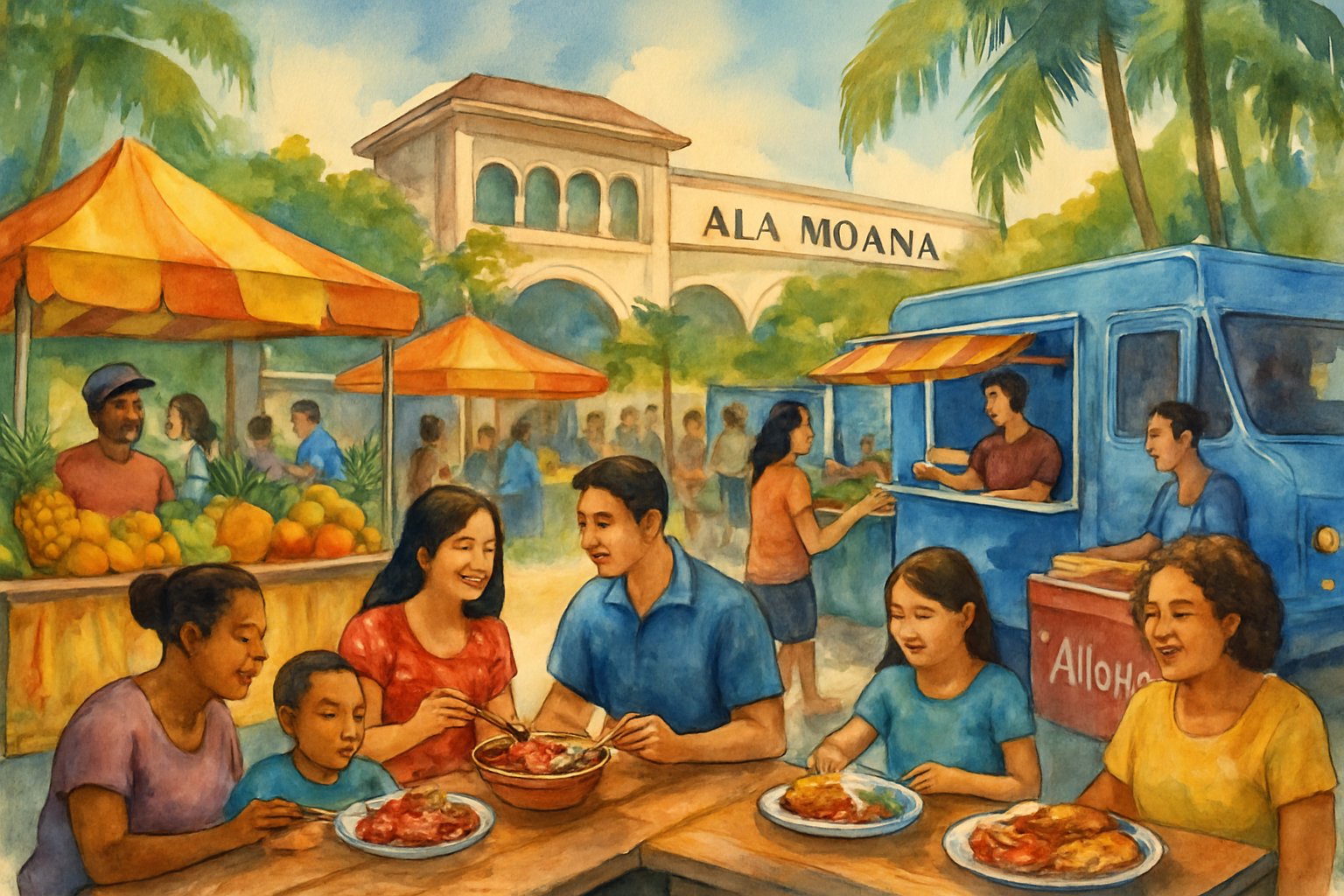
Ala Moana Center is famous for its huge variety of food.
I can find everything here, from quick snacks to fine dining, with flavors from Hawaii and around the world.
International Food Court
When I visit the food court at Ala Moana Center, I see many different types of cuisine. There are over 100 options, including Japanese ramen, Korean barbecue, Vietnamese pho, and American burgers.
I like that the meals are quick, affordable, and easy for families or solo diners. Popular spots include musubi stands, sushi counters, and local poke bowls.
Vegetarian and vegan meals are available if I need them. The lively atmosphere makes it a fun place to try something new or share a meal with friends.
The international food court offers so much variety that I never run out of choices. I appreciate how it brings together traditional Hawaiian foods and international flavors in one spot.
For more details on the food court’s diverse choices, check out the Hawaiian Planner’s guide.
Iconic Restaurants
Ala Moana Center also features well-known restaurants and fine dining spots. If I want a fancier atmosphere or want to celebrate an event, I can choose from several upscale places.
Many serve fresh seafood, local Hawaiian specialties, or dishes from top chefs. I can enjoy a steak dinner, sushi made with fresh fish, or traditional Hawaiian plate lunches.
Restaurants offer both indoor and outdoor seating. Some provide lovely views of the area or live music in the evening.
Some popular places are highlighted in the Ala Moana Center travel guide, which shows the range of restaurants and their styles.
Whether I want quick comfort food or a memorable dinner, Ala Moana Center has a spot for every craving.
Impact on Tourism and Economy
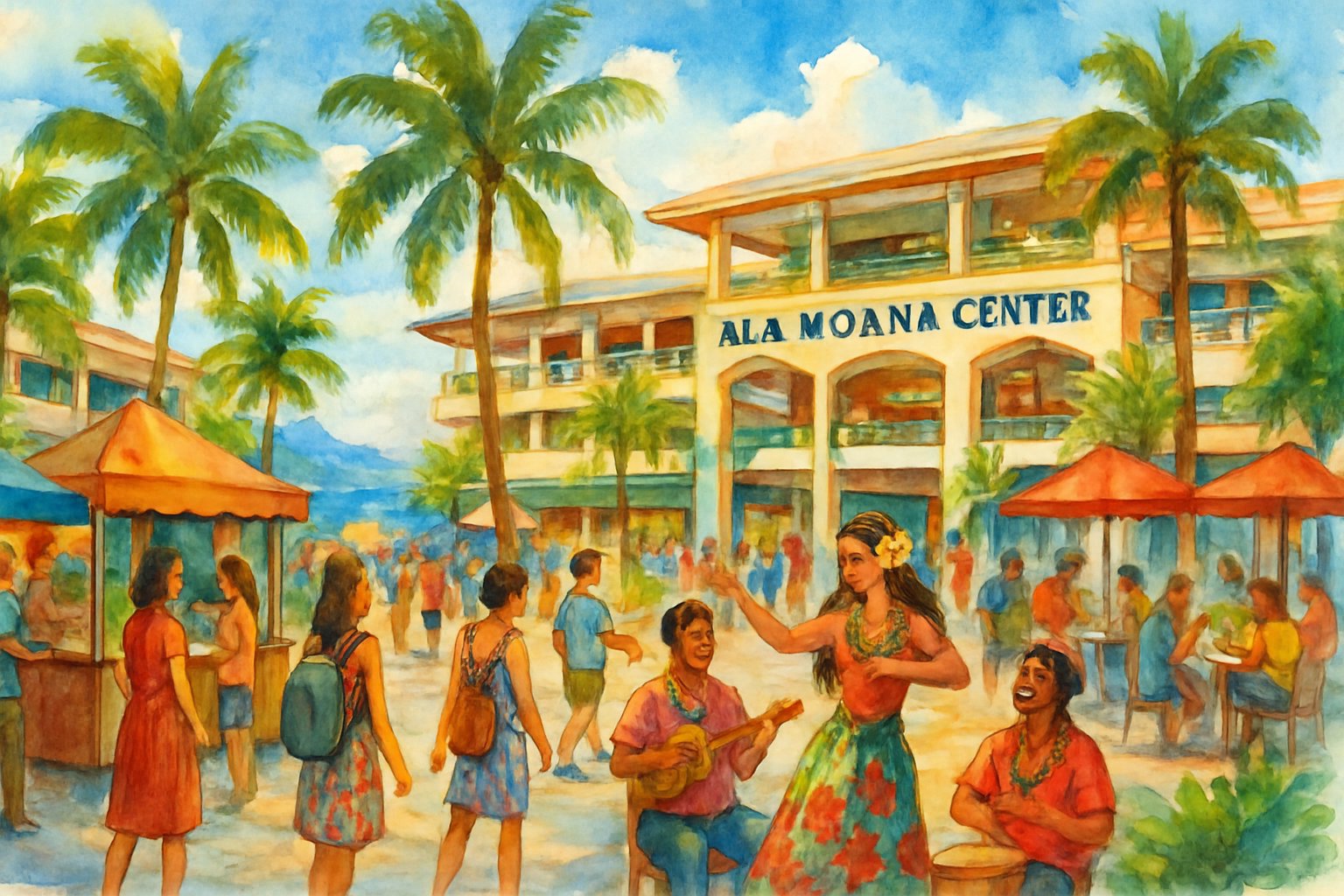
Ala Moana Center attracts visitors to Hawaii and supports unique local businesses. Its location between Waikiki and downtown Honolulu makes it a key hub for shopping and cultural experiences.
Attraction for Visitors
When I walk through Ala Moana Center, I see people from all over the world. The center welcomes more than 21 million visitors each year.
The open-air design blends shopping with nature, creating a unique experience. Tourists come for big brands, local shops, and Hawaiian food—all in one spot.
Special events, hula shows, and cultural celebrations happen almost every week. These programs introduce visitors to Hawaiian traditions, giving them more than just shopping.
For many, stopping at Ala Moana Center is a top reason to explore beyond Waikiki’s beaches and into Honolulu’s urban heart. You can learn more about visitor experiences here.
Contribution to Local Businesses
Ala Moana Center creates real opportunities for local business owners. Over 350 stores and restaurants—including many from Hawaii—operate side by side with international brands.
Local vendors benefit from the steady stream of tourists and island residents. Popular Honolulu eateries and Hawaiian craft shops get more exposure because of the mall’s foot traffic.
Last year, Ala Moana Center earned more than $1.3 billion in sales, showing its financial strength in the community. The center provides jobs, from retail workers to event staff.
This supports families around Oahu and helps small companies grow alongside global chains. Ala Moana’s commitment to community needs and business diversity makes it a model for sustainable tourism in Hawaii.
Architectural and Design Highlights
The Ala Moana Center uses design elements that match the beauty and spirit of Hawaii. Natural light, open-air paths, and Hawaiian symbolism shape how I experience the space.
Outdoor Spaces and Landscaping
When I visit Ala Moana Center, I first notice its open-air layout. The building uses this outdoor design so I can enjoy the warm Hawaiian climate while shopping.
Walkways are lined with palm trees and tropical plants. These natural touches make the mall’s atmosphere calm and inviting.
Native Hawaiian plants fill many corners of the center, showing pride in local flora. Water features, koi ponds, and small gardens add to the park-like setting.
Every turn brings a new view or a quiet spot to rest. There are plenty of shaded benches, making it easy for me to relax and enjoy the scenery.
Innovative Features
The Ala Moana Center’s design uses Hawaiian architectural principles. I notice features that celebrate the state’s cultural diversity, with art collections and works from local artists decorating several spaces.
These pieces make my visits feel unique and connect me to the area’s history. The mall was once the largest shopping center under one roof in America, showing the ambition of its early design.
Symbols representing Hawaii’s natural beauty appear throughout the complex, such as murals inspired by the ocean and volcanic landscapes. Wide walkways, open atriums, and seating areas allow for easy movement and gatherings.
Many halls and spaces get lots of sunlight because the center avoids traditional ceilings. This turns a simple shopping trip into an experience of light, art, and fresh air.
Ala Moana Center in Popular Culture
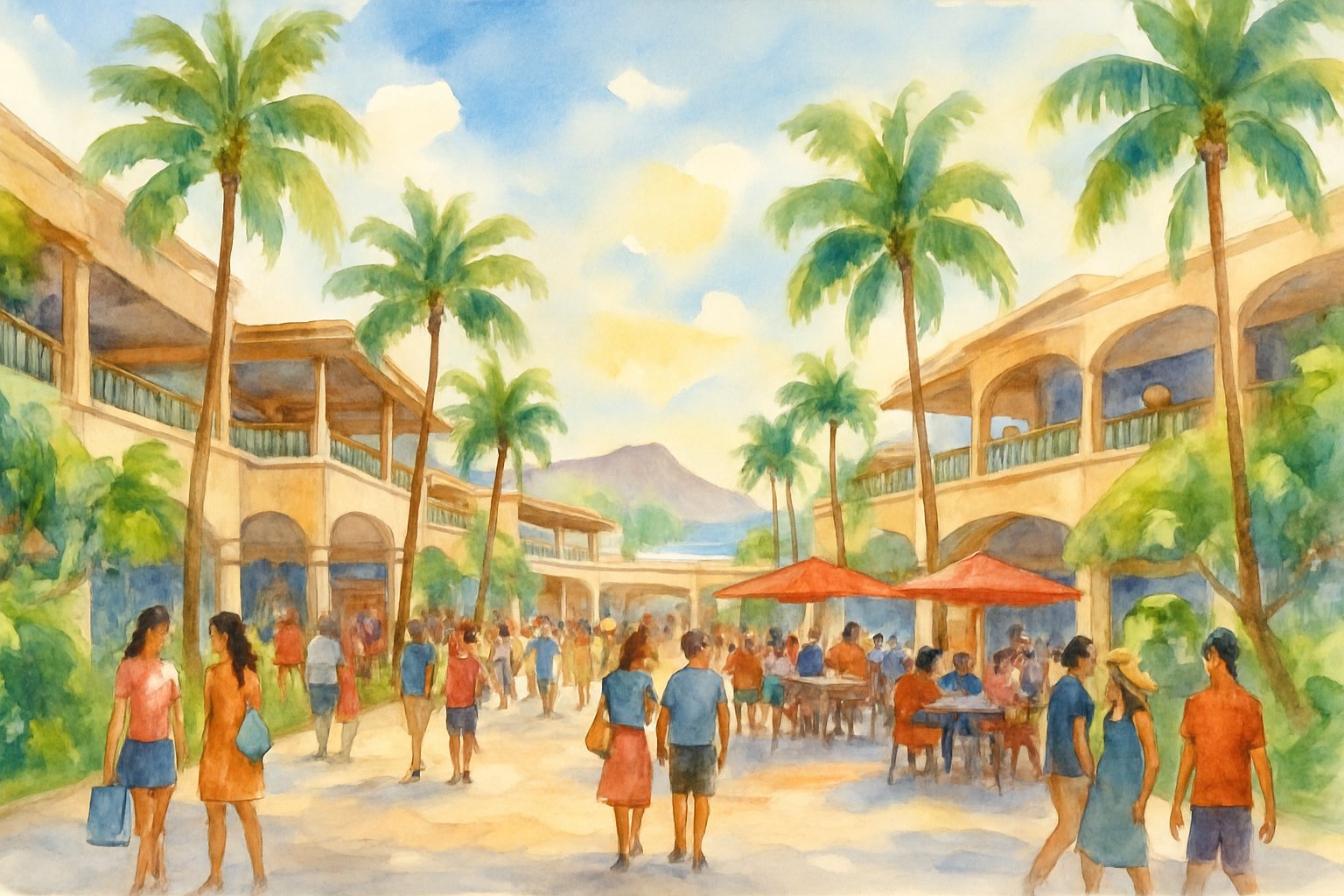
Ala Moana Center is not just a place to shop—it’s a landmark that appears in local stories, media, and daily life in Hawaii. I see how much this mall means to the community, both on screen and in personal memories.
Appearances in Media and Arts
Many TV shows and movies filmed in Hawaii include shots of Ala Moana Center. The wide walkways and open-air design make it stand out.
When I watch local news or lifestyle segments, I often spot the center as the backdrop for holiday events, live music, and cultural celebrations. The shopping center also hosts regular performances at its stage, bringing in hula dancers and musicians.
These events often get recorded and shared online or covered by local TV. Tourists and artists use Ala Moana as a setting for photo shoots, taking advantage of the vibrant setting and ocean views.
Local painters and photographers capture the koi ponds and busy corridors, making art that highlights the blend of tradition and modern life. The architecture and crowd scenes are popular subjects in exhibits celebrating Hawaii’s unique culture.
Local Stories and Legends
Growing up in Honolulu, I heard stories about Ala Moana Center’s koi ponds. Many people said the koi brought good luck and symbolized peace.
The ponds became a local favorite, and families would gather there to feed the fish or take photos with visiting relatives. I often met friends at the center’s stage for seasonal festivals.
This tradition is still strong, with the mall serving as a destination for annual events that blend shopping with community rituals. People talk about shopping adventures, unexpected reunions, or spotting local celebrities in the crowd.
The mall connects to the meaning of “Ala Moana,” which is “path to the ocean.” This adds a layer of local legend, reminding me that the center is more than just stores—it’s a part of Hawaii’s story.
Future Prospects and Community Legacy
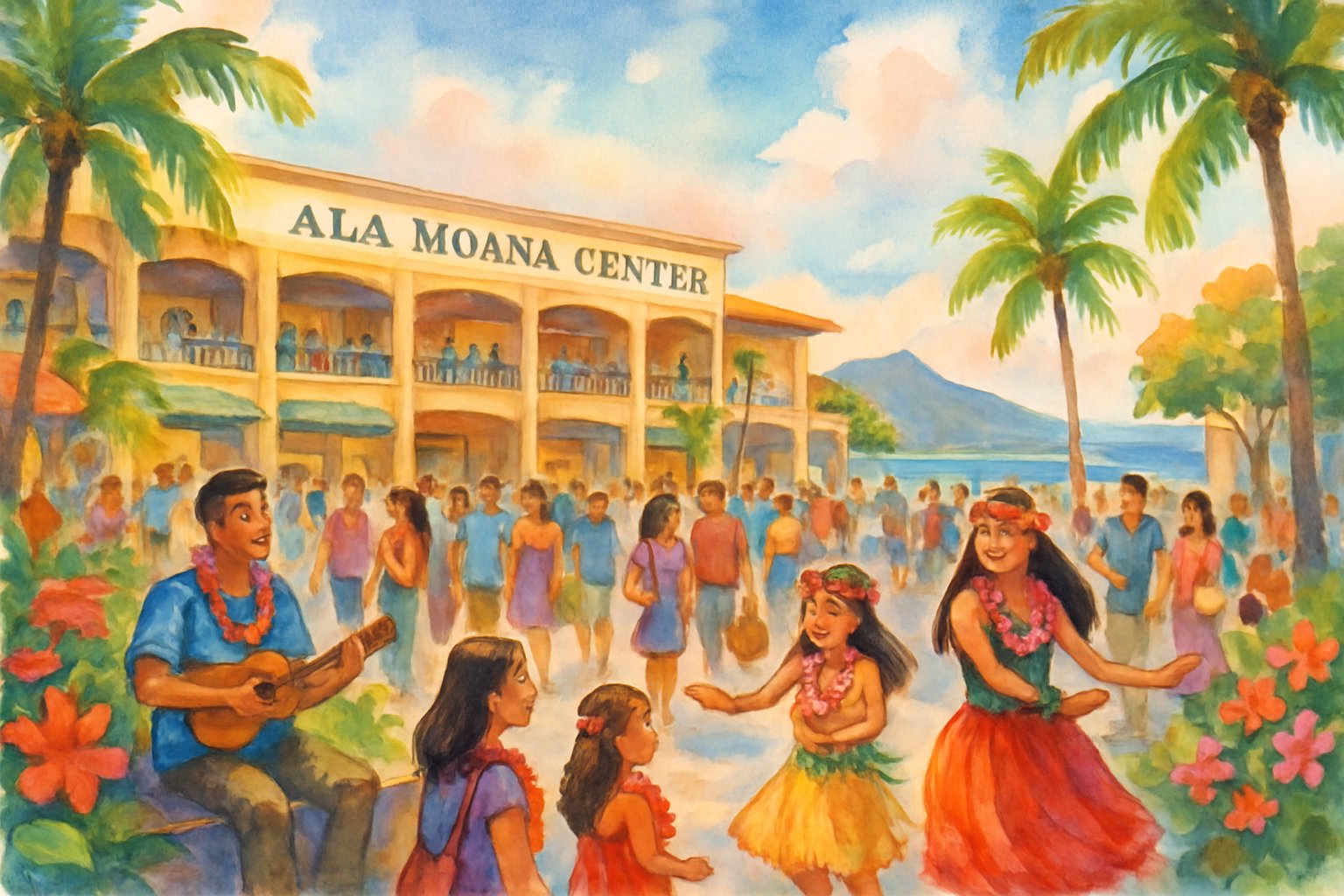
I see Ala Moana Center as a vibrant part of Honolulu’s daily life and culture. The future for this well-known shopping center looks active, with plans to keep growing and honor its connection to the people of Hawaii.
Planned Expansions
Ala Moana Center plans new projects and store openings to attract more visitors and serve the local community. My neighborhood has seen continued updates to the layout, with new brands and food options added almost every year.
The mall is known as the world’s largest open-air shopping center, and it works to keep that title by updating its facilities. When new expansions open, they bring more job opportunities.
I notice families and friends gather here at events like the annual cultural celebrations. Including open spaces, green areas, and local art is a priority in these plans.
This keeps the shopping center welcoming and comfortable for everyone who visits.
Key features of recent and planned expansions:
- More shaded walkways and seating
- Upgrades to garden and koi pond areas
- Additional local and global stores
- Spaces for community performances and markets
Sustaining Cultural Relevance
Ala Moana Center is not just a place to shop. It’s a gathering spot for the people of Honolulu.
I appreciate how the center hosts hula shows, craft fairs, and music events. These events highlight Hawaii’s rich traditions.
The center organizes cultural celebrations year-round. This keeps local customs visible in daily life.
Ala Moana Center connects strongly with the community. It acts as a meeting place for residents and visitors.
Global brands mix with local artists and small shops at the center. This helps preserve cultural identity.
The center uses eco-friendly practices, such as tropical gardens and open-air paths. These features show respect for the environment.


